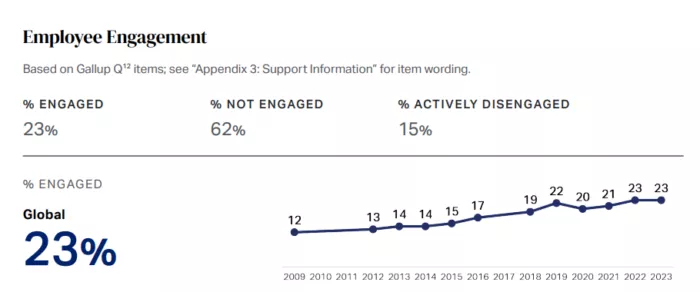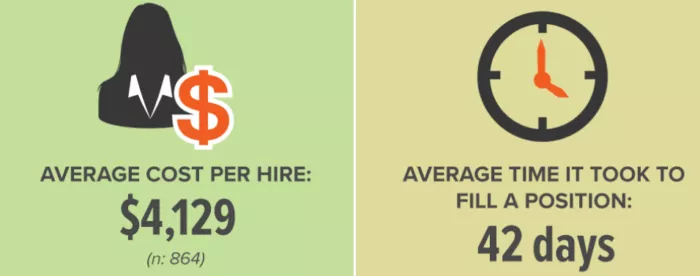You Get What You Tolerate

Ever heard the saying, 'You get what you tolerate'? It's funny because it's painfully true. In business, just like in life, if you put up with mediocrity, that's exactly what you'll get. And trust me, no one wants that.
Back in 2015, I hired a project manager who seemed perfect on paper. But soon enough, I realized she was just... okay. I thought, 'Maybe with a bit more training, she'll improve.' Spoiler alert: she didn't. And it wasn't just her. I was tolerating mediocrity across the board.
Here's the kicker: According to Gallup study, companies with highly engaged employees outperform their peers by 147% in earnings per share. Yet, only 15% of employees worldwide are engaged in their jobs. That's a lot of missed potential.
So, what's the secret sauce to leveling up? It's about setting high standards and not settling for less. By the end of this article, you'll learn how to:
- Identify areas where you're tolerating mediocrity.
- Take actionable steps to improve team performance.
- Make tough decisions that boost business growth.
Ready to stop settling and start thriving? Let's dive in!
Ready to take the first step toward success with our all-in-one marketing team? We have
The Impact of Tolerating Mediocrity
Tolerating mediocrity in your business is like inviting a slow poison to your success party. You might not notice it right away, but over time, it wreaks havoc on your performance and growth.
Think about it. If you're okay with your team just doing 'okay,' then don't be surprised when your business results are just 'okay' too. And who wants that?
The global workplace has changed since 2020. In the recent State of the Global Workplace Report, 62% of the employees considered in the report are not engaged.

And it gets better (or worse, depending on how you look at it). The Society for Human Resource Management (SHRM) estimates that the average cost to hire an employee is around $4,129, and it takes about 42 days to fill a position. Replacing an employee can cost between 50% to 200% of the employee's annual salary. So, if you're putting up with low performance, you're not just hurting your business growth – you're also burning a hole in your wallet.

Identifying Areas of Toleration
In business, there are blind spots that can you cost big time.Figuring out where you're letting mediocrity slide is like playing detective but without the cool hat and magnifying glass.
This is the reason why feedback is crucial. According to Officevibe, 65% of employees want more feedback, and companies that provide regular feedback have 14.9% lower turnover rates. If you're not giving regular feedback, you're probably tolerating more mediocrity than you think. And guess what? Your team is craving that feedback.
Poor performance is another area to watch. A Harvard Business Review study found that 80% of employee turnover is due to bad hiring decisions. That means if you don't catch those areas of low performance early, you're setting yourself up for a revolving door of employees.
So, how do you identify these areas?
- Look at your feedback loops and performance reviews.
- Are they regular? Are they honest?
- If not, it's time to step up your game.
Improving team performance isn't just about hiring the right people; it's about constantly helping them grow. Feedback plays a key role in ensuring job satisfaction. People want to be challenged, and when managers are genuinely invested in their development, it helps them reach their full potential
Steps to Level Up
Leveling up means taking responsibility, setting clear expectations, and providing the right resources. Sounds simple, right? Well, it is, but it takes effort.
Setting clear expectations is crucial. According to the American Society for Training and Development (ASTD), companies that offer comprehensive training programs have 218% higher income per employee than those without formalized training. So, if your team doesn't know what's expected of them, how can they possibly meet your standards? Make it crystal clear.
Taking responsibility for your team's growth is also vital. A LinkedIn Workplace Learning Report found that 94% of employees would stay at a company longer if it invested in their career development. Investing in your team's development is a win-win. They get better, and your business grows.

Here are the steps to do this:
- Offer regular training sessions and workshops.
- Make sure your team knows you care about their growth.
- Provide the necessary tools and guidance.
Remember, leveling up is a continuous process. Keep setting high standards, provide the necessary training, and watch your business thrive.
Making Tough Decisions
Firing underperforming employees is not fun, but sometimes it's necessary. Think of it like ripping off a band-aid. It stings at first, but it's better in the long run.
Removing toxic employees can lead to a 12% increase in productivity among the remaining team members, according to a Harvard Business Review study. So, keeping that underperformer around? Yeah, it's costing you more than you think.
Grant Thornton LLP and Oxford Economics found that executives who view their organizational culture as highly healthy are 1.5 times more likely to achieve revenue growth of over 15 percent in a three-year span.
So, how do you know when it's time to let someone go?
- Look at their performance reviews and feedback.
- Have they improved after you've given them a chance?
- If not, it's time to make that tough decision.
In this article “How to Hire and Fire Your Way to a $300k-year Business in Less than 6 Months,” we talked about how you can end those painful work relationships with people who aren’t a fit.
Success Stories
Everyone loves a good story, especially when it’s about winning. Sharing success stories isn’t just about bragging; it’s about building trust and showing what’s possible.
According to Marketing Charts, consumers trust recommendations from friends and family over any other type of advertising. So, when you share success stories, you’re not just telling people what you can do—you’re showing them. Influencers may be the”in” thing in the past couple of years but recommendations from family and friends trump them all.

A BrightLocal survey found that 91% of consumers read local branch reviews with the local news as the main source of business information and reviews at 43%. The numbers are saying that your testimonials and success stories are gold. They can influence potential customers more than any ad campaign ever could.
In fact, we tackled social proof in this article to show that testimonials, reviews, success stories, and other forms of social proof are fastest way to calm customer fears and build trust with potential customers and clients.
So, don’t be shy. Share those wins.
- Talk about how you helped a client double their sales.
- Share how your strategy turned a struggling business into a thriving one.
These stories aren’t just nice to hear—they’re proof that your methods work. And in business, proof is everything.
CONCLUSION
[yellowbox]If you want to get great work done for you, then you HAVE to download this free guide: 29 Examples of Marketing Projects You Can Delegate to Growbo to see how we can help you save time and money.
Tolerating mediocrity in your business is a surefire way to stifle growth and success. By setting high standards, giving regular feedback, and making tough decisions, you can significantly improve your business outcomes.
Here's a quick recap of the main points we've discussed:
- Allowing low standards can severely hurt your business performance and growth.
- Regular feedback and performance reviews are essential.
- Set clear expectations and invest in your team's development.
- Sometimes, you need to let go of underperformers.
- Sharing success stories builds trust and credibility.
Remember, the key to success is setting high standards and not settling for less. So, go out there and make it happen. Your business will thank you.
Keep Growin', stay focused,

Image credits:
1. https://slideplayer.com/slide/12135076/
2. https://www.gallup.com/workplace/645608/state-of-the-global-workplace-2024-report.aspx
3.https://www.shrm.org/topics-tools/news/human-capital-benchmarking-report-infographic
4. https://learning.linkedin.com/content/dam/me/learning/en-us/pdfs/linkedin-learning-workplace-learning-report-2018.pdf
5. https://www.marketingcharts.com/cross-media-and-traditional/word-of-mouth-227501













